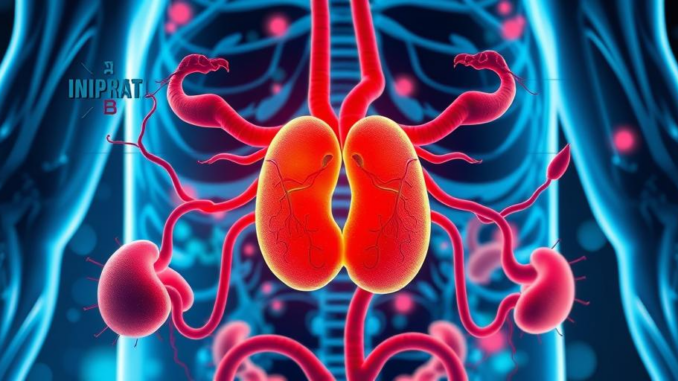
Summary
3D bioprinting is poised to revolutionize diabetes treatment by creating functional organs, personalized drug delivery systems, and advanced disease models. This technology offers solutions for insulin production, targeted therapies, and a deeper understanding of diabetes, potentially leading to a cure. The advancements discussed mark a significant step towards a future where diabetes is effectively managed, and perhaps even cured, through personalized, bioengineered solutions.
TrueNAS by Esdebe: healthcare data storage that delivers value without sacrificing security.
** Main Story**
Diabetes, a real global health challenge, demands we get creative with treatment. Enter 3D bioprinting – it’s not just science fiction anymore, but a potentially game-changing tech that could seriously reshape diabetes care. I mean, who wouldn’t want to see a future with more effective and personalized treatment options? Let’s dive into how this is all shaping up.
Engineering Functional Pancreases: Could This Be the End of Daily Injections?
Okay, this is where things get really interesting. One of the coolest possibilities with 3D bioprinting is building a bioengineered pancreas. If you didn’t already know, Type 1 diabetes happens because the insulin-producing beta cells in the pancreas get destroyed. With 3D bioprinting, scientists can actually arrange stem cell-derived islet cells next to vascular structures, creating something that mimics a real, working endocrine pancreas. It’s like building a replacement part from scratch!
Researchers are even talking about ‘bionic pancreases’ that could produce insulin, glucagon, and C-peptide. Imagine, a long-term solution that frees people from constant insulin injections! As of right now, April 2, 2025, these bioprinted organs are getting ready for clinical trials. Talk about exciting progress, right? I’m personally hoping that these clinical trials yield a positive outlook for this technology.
Personalized Drug Delivery: Precision Treatment for Better Results
And it’s not just about organ replacement, though. 3D printing allows us to create customized, implantable structures that can deliver drugs exactly where they’re needed. Think of it: targeted treatment with fewer side effects. Take, for example, 3D-printed microneedle (MN) patches. They offer a practically painless way to deliver insulin through the skin. It could make managing diabetes way easier and help people stick to their treatment plans. It’s hard to imagine any one who wouldn’t want to adopt this method.
Beyond Insulin: Tackling Those Pesky Diabetes Complications
But wait, there’s more! 3D bioprinting can also help with those nasty diabetes-related complications, like diabetic foot ulcers. You can create custom wound dressings and assistive devices that speed up healing and help restore function. I saw a presentation last year where a team was showing off personalized insoles made with 3D printing. They reduce pressure on the feet, lowering the risk of ulcers and infections. Pretty neat, huh?
Disease Modeling and Drug Screening: Supercharging Research
3D bioprinting is also proving invaluable in creating realistic disease models. It lets researchers replicate the complex environment of diabetic tissues. These models are a powerful platform for testing new anti-diabetic drugs and studying how the disease progresses. It’s like having a supercharged testing ground for new treatments. Which, ultimately, means faster drug discovery and more effective treatments for diabetes.
Challenges and Future Directions: Not All Sunshine and Rainbows
Of course, it’s not all sunshine and rainbows. We still have challenges to overcome. For one, the bioinks – the materials used in 3D bioprinting – need to perfectly mimic the natural environment of tissues to ensure cells stay alive and functional. And then there’s vascularization: getting blood vessels to form within these bioprinted tissues is crucial for delivering nutrients and oxygen. Plus, we need to figure out how to scale up production and make it cost-effective, this is still a challenge, though i’m optimistic.
The Future is Bright
Even with these hurdles, 3D bioprinting is a real beacon of hope in the fight against diabetes. As research continues and the technology improves, we’re opening up new possibilities for personalized, effective, and even curative treatments. As 3D bioprinting matures, it could offer not just better symptom management, but also the real prospect of a cure for millions living with diabetes. It is an exciting time to be working in this field, and I, for one, can’t wait to see what the future holds.


Be the first to comment